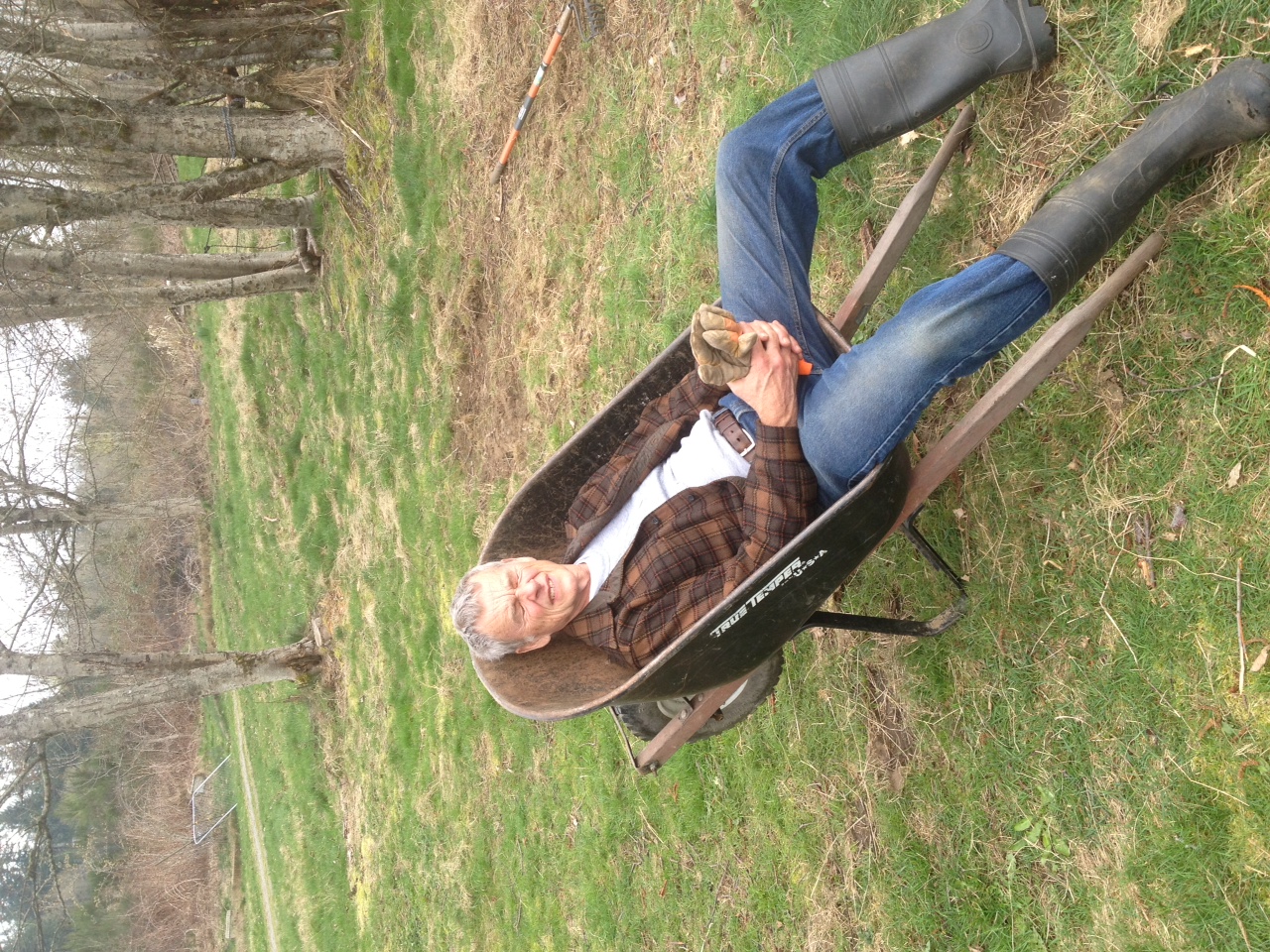Courting Behaviors of Disparate Birds
- Ken Campbell

- May 12, 2022
- 4 min read

When the pigs come to the farm in late winter as newly weaned piglets, Jay puts them in a special nursery stall in the barn where they have access to a well-fenced yard. As the pigs grow, they spend more time in the yard running, cavorting, and rooting; especially, rooting. By the time the pigs have grown to the point where they are to be moved to the pig house and its more-extensive yard, the ground in the nursery yard is totally denuded, uprooted, and barren of all plants. To stabilize this maximally disturbed soil, Jay seeds the ground with a cover crop of mostly clover.
The barn pigeons react to this seeding of the yard as if it is scattering feed for them. They flock to the newly-seeded nursery pen and immediately start eating the scattered seed. I noticed that when they gather there, many of them engage in courting practices. For the males, this means they approach a female, assume an exaggerated upright posture, dance in a small circle in front of her, bow, coo, and fluff their neck feathers. Pigeon neck feathers possess a natural iridescence and somehow, the fluffing of feathers during this display makes that iridescence especially radiant. Often, two males will perform this courting dance at the same time in competition for the female’s attention. More often than not, she flies away.
All of this is rather routine in a barnyard full of pigeons and is not worthy of any special note. I would let it go without comment if not for the fact that a long-time friend (Jim DeMartini) recently sent me a video he took of the courting rituals of Prairie chickens on a short-grass prairie in eastern Colorado. These Prairie chicken rituals receive a lot of attention from birders because the Prairie chicken is an endangered bird that is becoming a rarity and because their breeding behavior is dramatic and unusual – symbolic of the unusual behaviors that can evolve as a result of natural selection on a special environment like the prairie.
Briefly, in the early mornings of early spring, a collection of male birds gather in a very special place, a lek, to conduct their courting displays. They posture and dance, raise their tail feathers, erect their neck feathers to expose a colored patch of skin over inflatable air sacs, and lift a tuft of feathers on the back of their heads to create a tufted-ear or horn-like appearance. Air is moved in and out of the air sacs under the skin patch to create a booming sound. These actions are part of the competition among males for dominance in the lek and for attention from the few females in attendance as the males solicit breeding opportunity.
Now pigeons don’t rank with Prairie chickens in the spectacle of their courting display. However in my notice, pigeon cooing is analogous to prairie chicken booming, the circular dance of the pigeon is not unlike the foot-stomping dance of the prairie chicken, and the incorporation of neck feathers in the display by both species has striking parallels. Maybe these parallels are not so striking because other birds, like the Sage grouse, also have courting displays that are similar to those of the Prairie chicken.
In fact, all birds have ritualized courting behaviors that involve posturing, dancing, specialized displays, flights, fights, etc. But, these various behaviors tend to be quite distinct and unlike one another among unrelated birds. For instance, courting displays in the hummingbird are unlike those in a robin which are unlike those in a Mallard duck or a Bald eagle. Whereas the Prairie chicken and Sage grouse are closely related and have similar displays, the Prairie chicken and the pigeon, which are not closely related, would be expected to have quite different displays.
To get an idea of the strength of the relationship between birds, one can examine the organization of authoritative bird books. Descriptions of closely-related bird families appear in close proximity to one another in these books; the more distant the respective families are in their presentation, the farther apart they are on the phylogenetic tree. In David Sibley’s Guide to Birds, the description of the bird family containing Prairie chickens is separated from the description of the family containing pigeons by descriptions of 11 other families and 120 pages. In the National Geographic Birds of North America, this separation is 29 families and 270 pages. From this, one concludes that Prairie chickens and pigeons are not closely related. Consequently, they likely did not inherit their analogous courting behaviors from a common ancestor. The behavioral similarities in these two species arose from independent selection of these traits in unrelated ancestors. One could only guess why this would be so but there it is – evolutionary convergence on a set of apparently successful reproductive behavioral traits along two different lines of birds. Neck feathers?
For me, the realization that the forces of nature can create analogous behaviors in unrelated lines of evolving animals is a source of wonder, awe, and amazement. Attention to life on the farm is truly inspiring if you let it direct your thoughts toward how farm life is integrated with all other life on this planet.






Comments